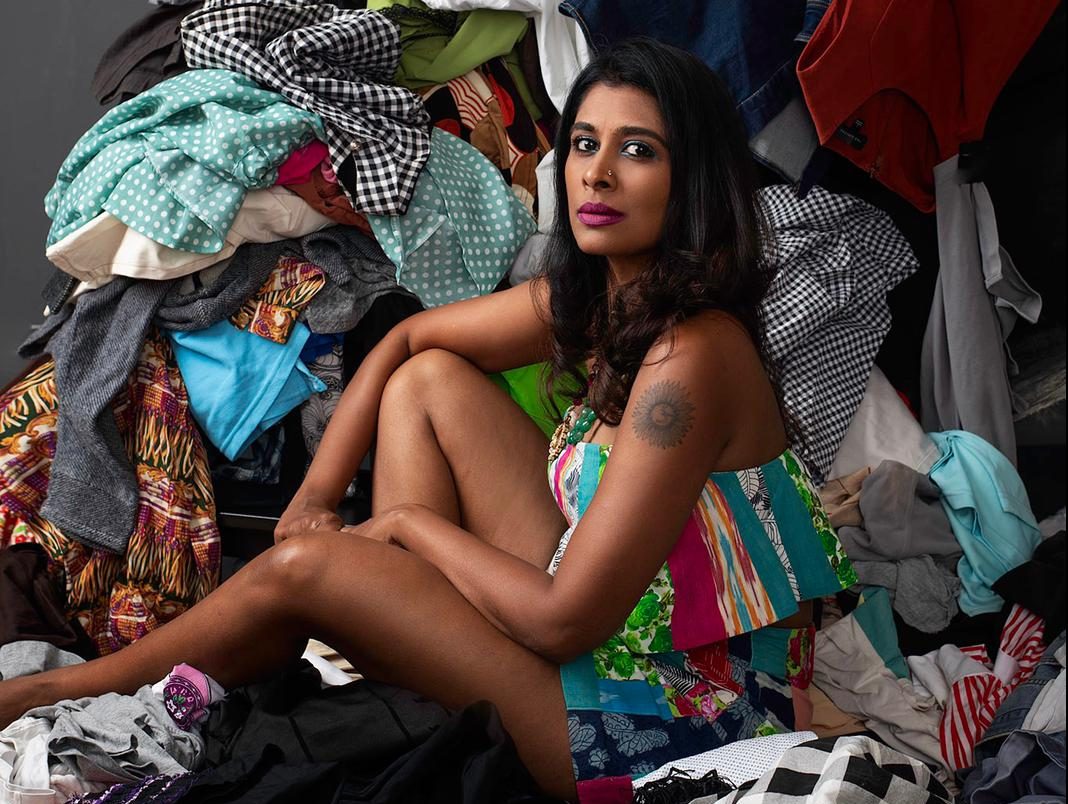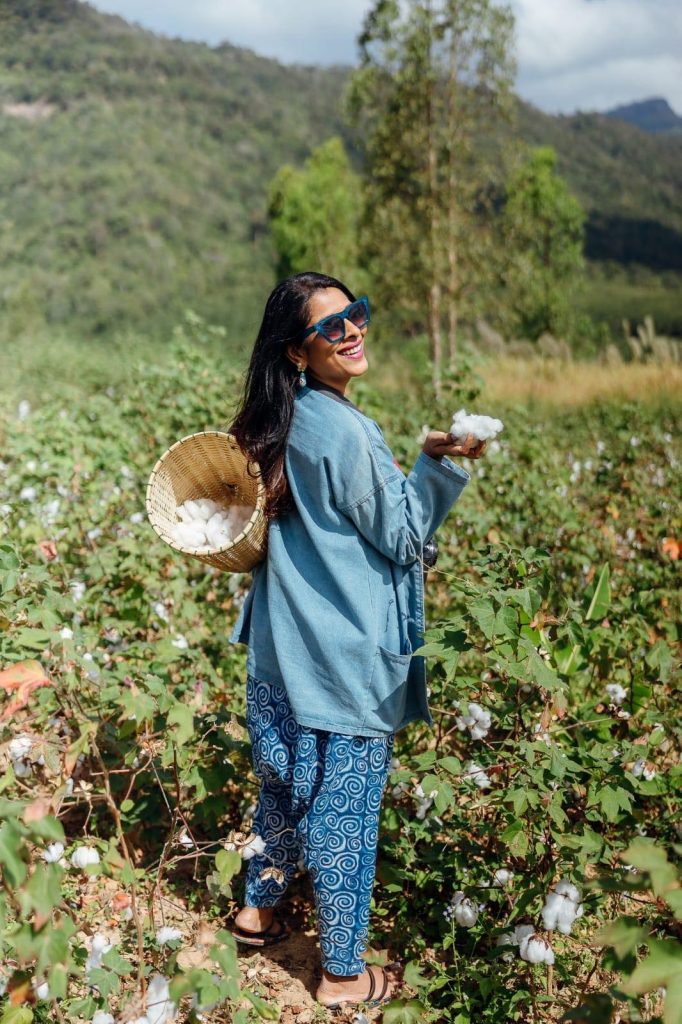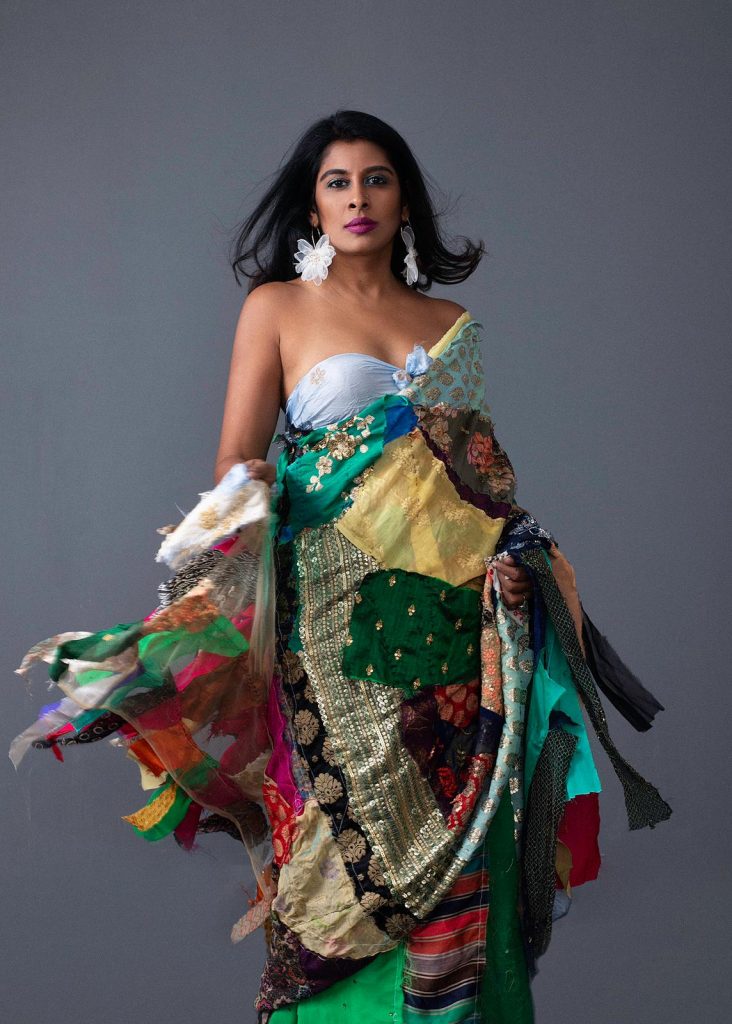A look at how our shopping choices shouldn’t cost the Earth.
By Nafisa Singhsachathet
Last month, I met Aparna Sharma at Patom Organic Living, a breezy store-cum-café in Thonglor that specialises in locally-sourced goods. Aparna’s choice in this meeting location was the first hint I had about her commitment to sustainability, and as we talked over a steaming pot of tea, she soon divulged her journey into eco-friendly fashion.
Aparna is a full-time mom to two daughters and a long-time expat who’s continued to maintain a deep love for her home country of India. Ever since she was young, she’s had a passion for making her own clothes, one that stemmed from experiences like crafting her own blouse for a school ball and watching weavers use handlooms to create stunning garments.
This love for crafting clothes evolved into a passion for sustainable fashion after she received news about the 2013 Rana Plaza Collapse, where structural failure led to the collapse of a garment factory in Dhaka, Bangladesh that killed over a thousand people. The disaster really struck Aparna, as she said: “This incident combined with watching Andrew Morgan‘s The True Cost (2015) made me critical of my purchases. I realised that I didn’t want to be part of an industry that disempowers people and destroys the planet, and it motivated me to begin writing about the dark side of fashion on my blog, Stylish Suitcase, that’s also on Instagram.”
Now, Aparna’s page boasts over 21 thousand followers and despite her fun photoshoots, viral videos, and colourful ensembles, the message at the heart of her platform is clear—to educate others that becoming more sustainable does not have to be at the expense of your personal style. As she puts it: “I started my Instagram page for fun and I’m the same person on my account as I am off of it. I love the ability to share my sustainable fashion journey with people. It’s so rewarding when people engage with my content and it leads to meaningful conversations and active change.”
I ask Aparna more about her mission, to which she responds: “Fast fashion has made a sizeable contribution to climate change and that’s something most people don’t realise. We know the impacts that the transport and energy industries have on climate change, but we often forget to factor in the huge role that fashion plays.”
Fast fashion is a term for brands that replicate catwalk trends and mass produce them at low cost, leading to the concept of ‘wearing once and then throwing away.’ It’s estimated that the average modern consumer buys 60 percent more clothing now compared to the year 2000 and keeps each garment for only half as long. According to other statistics, the industry annually produces 10 percent of global carbon dioxide emissions and the same quantity of global greenhouse gases as the entire economies of France, Germany, and the United Kingdom combined. The fashion industry also uses 79 trillion litres of water per year, and there’s rising concerns about its contributions to landfills, and chemical waste ruining the livelihood of populations that depend on lakes and rivers.
Moreover, although large brands like Zara and H&M are designed in Europe or the U.S., their items are produced in developing countries like India and Bangladesh where labourers are underpaid and factories are operated without proper regulations. Just this year, news outlets resported that several global fashion brands have refused to pay for over USD 16 billion worth of goods, leaving suppliers unable to pay their workers. “This has been an ongoing issue for years” Aparna says, “but I think more people are beginning to keep tabs on it now because it’s present on social media and more widely reported.”
Aparna continues by introducing the concept of ‘circular fashion’: “It’s a more ideal system where clothing is produced through a circular model, where every point in its life cycle is thought out and the beginning is just as important as the end. This system is considerate of materials, it reduces waste and pollution by design, and takes repurposing into consideration.”
Aparna reiterates that becoming a sustainable shopper isn’t about making a full transformation overnight, but rather taking small steps towards becoming more conscious. Here are some tips:
- Invest in good quality items that will remain fashionable over time.
- Support local brands that are empowering labourers and being conscious of the environment.
- Shop from your closet: the most eco-friendly outfit is the one you already have in your wardrobe.
- Try a shopping detox once in a while, it’ll help spark creativity with creating outfits from what you have.
- Buy from vintage or thrift stores and swap events like @swaptilyoudropbkk
- Repurpose your clothes: transform an item into something completely different.
Inspired by the idea of repurposing, Aparna tells me about a recent zero waste project she did in collaboration with Bonny Sethi and Sudeshna Hati: “I’ve known Sudeshna for years; she’s a very talented photographer. For this project, we wanted to design something that reflected the idea that waste is not waste until we decide to waste it. Sudeshna suggested I meet with Bonny to gather scraps from her design studio and we ended up transforming all the pieces into a zero waste sari (pictured above). It turned out beautiful with all the different colours and textures.”
I then asked Aparna which designers she particularly admired for their commitment to sustainability. She explains that for the most part she designs her own clothes, working with local seamstresses and weavers to source eco-friendly fabrics to transform into vibrant pieces. However, she appreciates brands like Okhai, who specialise in Indowestern wear crafted by women of the Okhamandal region in Gujarat; Indeloom, a start-up supplying indigenous weaves that have been handcrafted from natural fibres; and Shuffling Suitcases, an online platform that celebrates brands that value their roots and ethics
With many brands hopping on the sustainability trend, I ask Aparna how we can truly know which to trust. She explains, “For insight into what brands to shop from, I recommend an app called Good On You (www.goodonyou.eco), which rates brands according to how sustainable their practices are, and can be helpful for anyone looking to rebuild their wardrobe.”
Follow Aparna’s fashion journey on Instagram @stylishsuitcase








